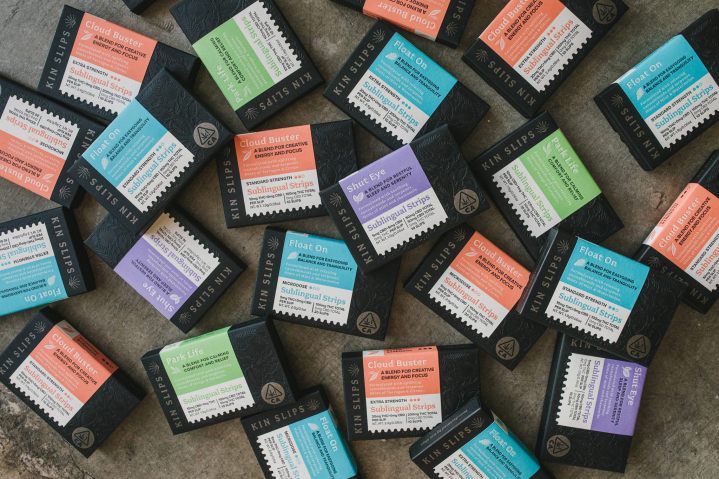
Josh Kirby was hell-bent on changing the way people got high when he got into the cannabis space back in 2013. This was before CBD began showing up in coffee shops, bodegas, and the pharmacy section of Walgreens. This was around the time when Colorado and Washington passed Amendment 64 and Initiative 502, respectively, legalizing the possession and sale of marijuana for recreational use.
Growing up in rural New York, Kirby was brought up with a very conservative attitude towards cannabis. Along with that attitude came the type of fear and paranoia that tailed marijuana like a cop car. It wasn’t until Kirby grew up and discovered edibles that his viewpoint slowly changed. His goal? Get people on his level while rejecting the stigma surrounding weed.
“Most American consumers generally don’t smoke,” starts Kirby, “and they’re not going to change that habit when they come into the cannabis space. So we wanted to look for a way to provide a smoke-free product.” Kirby and his team began their adventure in research and development with a reconnaissance mission.
“We started going into these dispensaries and realized the vast majority of infused products that were available at the time were like brownies made in somebody’s kitchen. They were wrapped in plastic wrap and had, like, had Sharpie written on them with whatever the strain was put in there.”
Beyond brownies
You don’t need to be a Snoop Dogg-level stoner to know the effects that cannabis edibles have historically had on people. Eat a brownie, feel nothing for an hour, and then you’re either hit with the heaviest high you’ve ever felt, or you continue feeling nothing until you eat another brownie and are then hit with the heaviest high you’ve ever felt. Kin Slips came about as a way to give adults a safe, reliable, and overall not terrifying way to ingest THC without the guesswork.
“The goal has always been to like, make something that would be indistinguishable from a product on like a Walgreens shelf,” continues Kirby, “something people could feel really confident in buying.” With a background in chemistry to pull knowledge from, Kirby began by experimenting with gum in his kitchen until he realized the combination could never work.

“I was making these crude little gum tablets in my kitchen to just kind of play around with… but cannabis is lipophilic, which means that it loves to stick the fat molecules. Gum is basically just a big wad of fat molecules. So the cannabis just stays stuck in there.” Kirby goes on to explain that it’s marijuana’s lipophilic properties that make it perfect for baked goods like brownies or cookies. Because you don’t (or, at least shouldn’t) swallow gum, your digestive system never gets the chance to break the bonds between the cannabis and the fat, the catalyst that transports cannabis into your bloodstream.
Shortly after the gum experiment, Kirby turned to a different method of delivery he’d only recently heard about: Sublingual strips. Also referred to as thin-film drug delivery, sublingual (literally translating to “under the tongue”) strips neatly and efficiently deliver cannabis directly into the bloodstream while promising a consistent experience by completely bypassing the digestive system.
For those who have never had the opportunity to try Kin Strips or any drugs in the sublingual strip category, they’re pretty much identical to those Listerine breath strips from way back when — a 0.03-ounce strip of plastic-feeling material that melts under your tongue. The active ingredients in each strip are then carried into the bloodstream directly through the mucosal membrane, bypassing the digestive tract, and thus preserving the active cannabinoids and terpenes.
Trading kitchens for chemistry
“There’s a number of different ways that extractions work and we use a couple of specific types.” continues Kirby. “Ethanol or CO2 extraction work basically the way any other solvent extraction would work: You take your cannabis and you either freeze it or pulverize it, then you flood it with the solvent. So, you would either kind of just dump a bunch of ethanol into it or put it into a specialized container that lets liquid CO2 travel through it.”
Kirby goes on to explain how his team isolates terpenes and flavonoids, which are then stripped out of the solvent and extracted, leaving a crude oil called the distillate.
“What we’ll do is we’ll take the distillate and we’ll combine it with a set of other cannabinoids and sometimes groups of terpenes to accomplish the specific flavor profile.”
The distillate goes into what Kirby refers to as a “slurry” which is homogenized for a number of hours before a gas purging process flattens the slurry into one long strip of plastic-like material.
Now, Kin Slips are in the same category as smoking or vaping without the associated health risks of smokeable cannabis. The amount of control and precision in the technology is far beyond what you can get with edibles or inhalants, too. With only 10 to 15 minutes needed before the effects hit, Kirby and the Kin Slips team hope to put an end to the days of scarfing down a tray of brownies because “nothing is happening.”
While we’re still a far way off from a more ubiquitous THC delivery system across the edible landscape, Kin Slips and the nanotechnology that transfers the psychoactive effects of weed from plant to strip is more than encouraging. This is the next generation of edibles.



